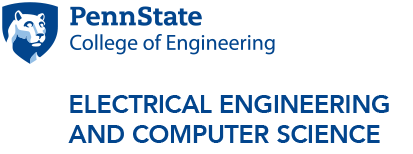EE Colloquium: Metasurface enabled Integrated Nanophotonic Interface to Quantum Systems
Abstract: Over the last decade, flat optical elements composed of an array of deep-subwavelength dielectric or metallic nanostructures of nanoscale thicknesses – referred to as metasurfaces – have revolutionized the field of optics. Because of their ability to impart an arbitrary phase, polarization or amplitude modulation to an optical wavefront as well as perform multiple optical transformations simultaneously on the incoming light, they promise to replace traditional bulk optics in applications requiring compactness, integration and/or multiplexing. Recent demonstrations including achromatic high-numerical aperture metalens, full-Stokes polarimetry, quantum-light generation and tomography, LIDAR and imaging/spectroscopy demonstrate the breadth of technologies where metasurfaces have had a significant impact.
In this talk, we demonstrate the versatility of spatial shaping metasurfaces to be directly integrated on integrated nanophotonic chips for their applications as an efficient interface to AMO systems. This platform provides precise control of optical beam-delivery whilst maintaining integrability and scalability for the specifications required by various AMO technologies. Through spatial multiplexing of metasurfaces integrated with grating out-couplers directly on a nanophotonic chip, we show the ability to create arbitrary optical fields in the far-field to enable applications such as cold atom traps and atomic clocks. Finally, we conclude by discussing the ability of metasurfaces to fully shape the spatio-temporal properties of light at the ultrafast time scale, and on nanometer length scales.
Biography: Amit Agrawal is a Project Leader at NIST in Gaithersburg MD, and an Associate Research Scientist at the IREAP of the University of Maryland at College Park. He received his Ph.D. in Electrical Engineering from the University of Utah in 2008, followed by a Postdoc at NIST. He then joined the faculty of Syracuse University in 2011, as the inaugural John E. and Patricia Breyer Professor in Electrical Engineering in the EECS Department. He has been back at NIST since 2014, where his group is developing novel measurement methods to study light-matter interactions at the nanoscale and on ultrafast timescale in novel materials and devices. His current research interests are focused on developing integrated nanophotonic device architectures operating from the ultraviolet to the infrared for quantum optics applications including atom trapping and frequency combs.
Event Contact: Xingjie Ni



